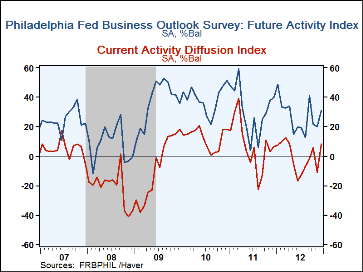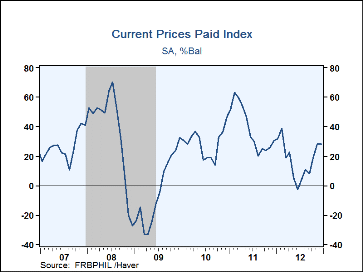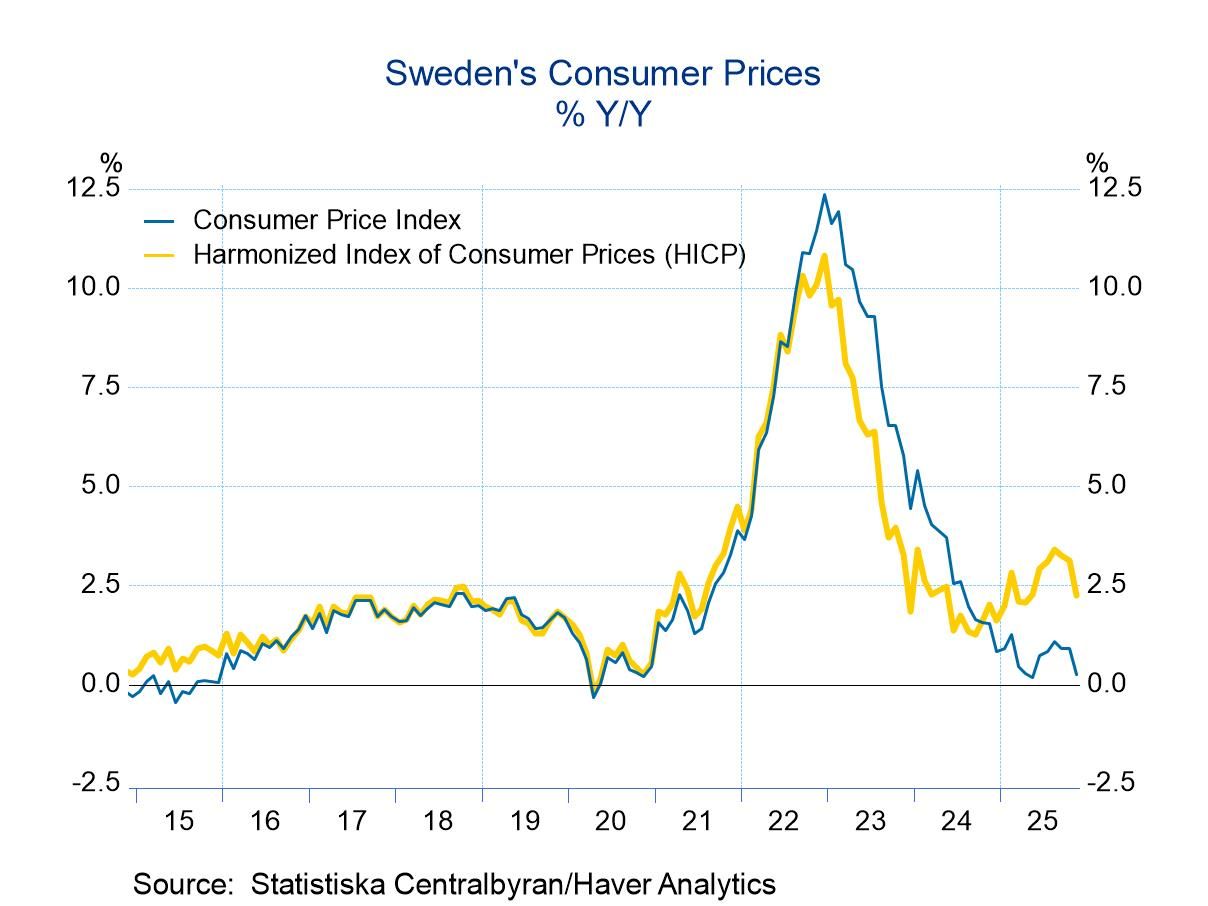 Global| Dec 20 2012
Global| Dec 20 2012Philadelphia Fed Business Activity Index Improves Sharply
by:Tom Moeller
|in:Economy in Brief
Summary
With the passage of Hurricane Sandy, business activity improved. The Philadelphia Federal Reserve Bank reported that its General Business Conditions Index rose sharply to 8.1 this month after falling to an unrevised -10.7 during [...]
With the passage of Hurricane Sandy, business activity improved. The Philadelphia Federal Reserve Bank reported that its General Business Conditions Index rose sharply to 8.1 this month after falling to an unrevised -10.7 during November. Haver Analytics constructs a seasonally adjusted figure comparable to the ISM index and it jumped to 51.3, its highest level since April. During the last ten years there has been an 85% correlation between the adjusted Philadelphia Fed index and the ISM Mfg. PMI Composite index.
Improvement this month was across most of the component series, notably new orders, shipments and delivery times. In addition, the employment figure turned to a positive 3.6 after five consecutive months of being negative. During the last ten years there has been an 83% correlation between the employment index and the m/m change in factory sector payrolls.
Pricing power remained at its highest level since February. During the last ten years there has been a 71% correlation between the prices paid index and three-month growth in the intermediate goods PPI.
The separate index of expected business conditions in six months rose to its highest level in three months. Employment, new orders, shipments and capital expenditures each rose sharply.
The survey panel consists of 150 manufacturing companies in Federal Reserve District III (consisting of southeastern PA, southern NJ and Delaware.) The diffusion indexes represent the percentage of respondents indicating an increase minus the percentage indicating a decrease in activity. The figures from the Philadelphia Federal Reserve can be found in Haver's SURVEYS database. The Consensus expectations figure is available in AS1REPNA.
| Philadelphia Fed (%) | Dec | Nov | Oct | Dec'11 | 2012 | 2011 | 2010 |
|---|---|---|---|---|---|---|---|
| ISM-Adjusted General Business Conditions | 51.3 | 45.1 | 46.6 | 51.2 | 47.7 | 51.9 | 50.7 |
| General Business Conditions | 8.1 | -10.7 | 5.7 | 6.8 | -0.2 | 7.7 | 12.1 |
| New Orders | 10.7 | -4.6 | -0.6 | 10.7 | -0.1 | 7.1 | 5.5 |
| Shipments | 18.3 | -6.7 | -0.2 | 9.1 | -1.3 | 9.9 | 8.3 |
| Unfilled Orders | 2.3 | -4.6 | -6.3 | 5.1 | -6.5 | -0.9 | -3.0 |
| Delivery Time | -1.2 | -13.8 | -15.9 | 1.7 | -9.1 | -0.4 | 0.9 |
| Inventories | -11.5 | -12.5 | 2.1 | 7.2 | -6.0 | -0.4 | -5.0 |
| Number of Employees | 3.6 | -6.8 | -10.7 | 11.5 | -0.0 | 11.0 | 4.6 |
| Prices Paid | 27.8 | 27.9 | 19.0 | 30.4 | 17.6 | 38.6 | 28.8 |
Tom Moeller
AuthorMore in Author Profile »Prior to joining Haver Analytics in 2000, Mr. Moeller worked as the Economist at Chancellor Capital Management from 1985 to 1999. There, he developed comprehensive economic forecasts and interpreted economic data for equity and fixed income portfolio managers. Also at Chancellor, Mr. Moeller worked as an equity analyst and was responsible for researching and rating companies in the economically sensitive automobile and housing industries for investment in Chancellor’s equity portfolio. Prior to joining Chancellor, Mr. Moeller was an Economist at Citibank from 1979 to 1984. He also analyzed pricing behavior in the metals industry for the Council on Wage and Price Stability in Washington, D.C. In 1999, Mr. Moeller received the award for most accurate forecast from the Forecasters' Club of New York. From 1990 to 1992 he was President of the New York Association for Business Economists. Mr. Moeller earned an M.B.A. in Finance from Fordham University, where he graduated in 1987. He holds a Bachelor of Arts in Economics from George Washington University.










